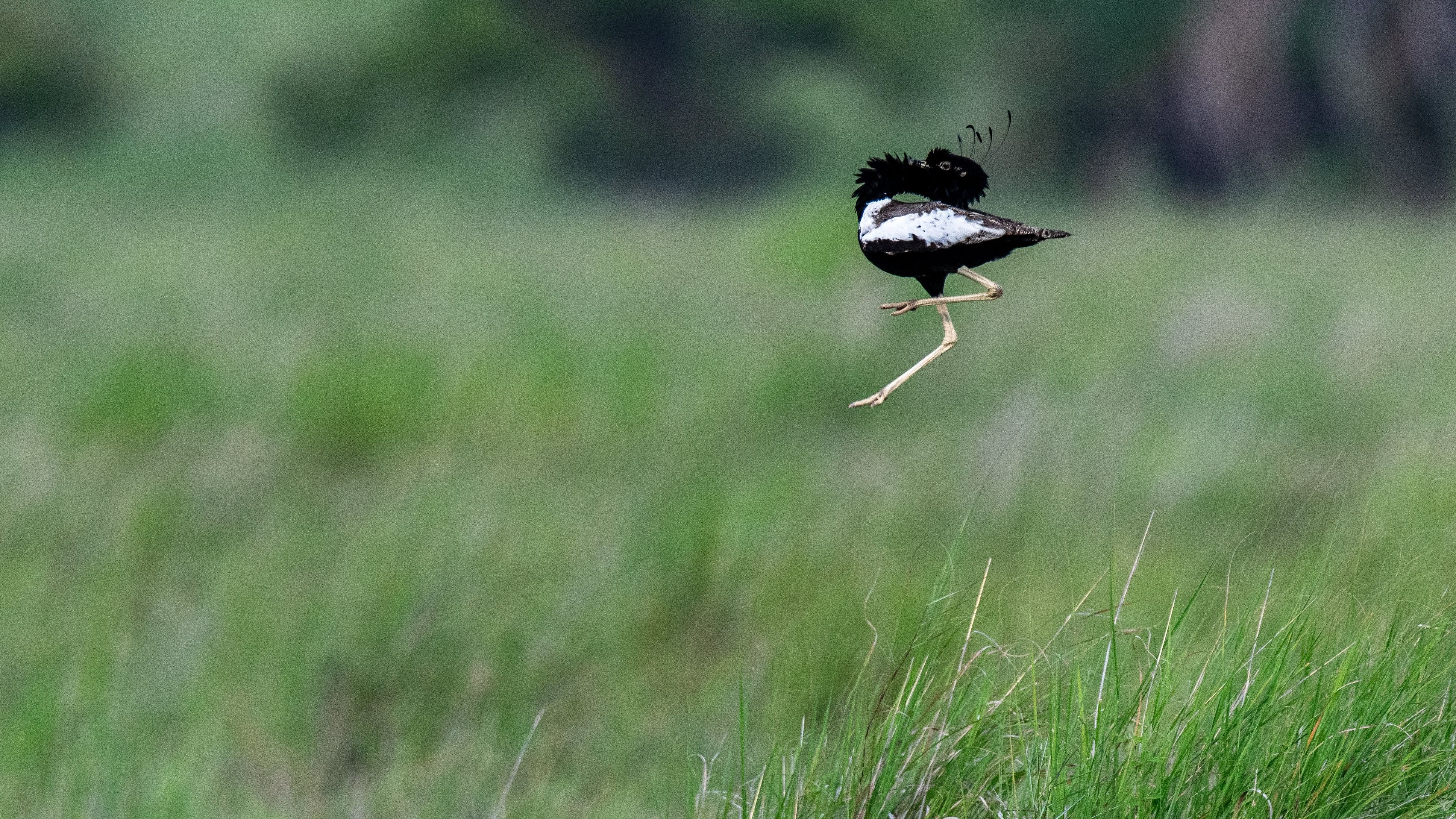
The breeding display of the male lesser florican.
Photo Courtesy: Amith Rao
Hubballi: Days after it was reported that the Great Indian Bustards, a critically endangered species, have deserted their breeding grounds of Siruguppa in Ballari district, it has now emerged that their ‘cousins,’ the lesser floricans, too have not been visiting their regular breeding sites in the grasslands of Bidar district, in the last 3 years.
Neither researchers nor forest officials have sighted the breeding display of the lesser floricans (where male bird hops in the air to attract female) in Bidar, Aurad and Bhalki taluks since 2021.
The state of India’s birds, in its 2023 report, had estimated that there could be nearly 900 individual birds in the wild, a majority of them in Rajasthan and Gujarat.
The report says the species are on the verge of extinction as the grasslands, their habitats, are drastically reducing due to urbanisation, plantation and agriculture activities.
Till recently, the Deccan Plateau used to be one of the important breeding grounds of lesser floricans.
Bidar was the only place in Karnataka where the lesser floricans were seen during monsoon, their breeding season.
Researchers at the Bombay Natural History Society (BNHS) and forest officials blame the changing landscapes.
The grasslands, a majority of which are private land, are being developed as layouts and solar parks by individuals. The social forestry department had also taken up tree plantation in 88 acres of grasslands.
In 2019, the department recorded the presence of six birds in Bidar. While forest officials and researchers have been reporting indirect sightings (collection of feathers) in the non-monsoon season in the last 3 years, there has been no recording of the birds during monsoon.
Experts believe that the non-display of male birds could be for two reasons: the birds might have either shifted to alternative breeding sites or the non-presence of female birds.
Sriram Reddy, a Hyderabad-based bird expert, says lesser floricans are highly sensitive and any change in their habitats could adversely impact breeding pattern.
Sujit Narwade, deputy director of BNHS, says Deccan Plateau was one of the strongholds for lesser floricans a decade ago.
“Grasslands of Bidar, Rollapadu wildlife sanctuary (AP), Akola and Washim (Maharashtra) were breeding grounds for these birds. In the last 3 years, we have not recorded any male breeding display in Bidar,” he says.
The sighting of these birds during monsoon has also reduced in Rollapadu and Maharashtra, Narwade adds.
“The grasslands in Bidar are making way for layouts and factories. This may have forced the floricans to shift to Gujarat or Rajasthan for breeding,” he says.
Locals claim that recently, the government had given permission to expand the 300-hectare private solar power plant near the breeding ground to a 500-hectare plant.
Bidar Deputy Conservator of Forests Vaanathi Murugesan says every effort is being made to restore the grassland.
“We are uprooting invasive trees from grasslands to ensure that floricans get their habitat,” she said.
She concurs that there hasn’t been a breeding display of floricans in the last 3 years.
“We do not have a say on private lands. The forest department is looking for private companies to purchase private lands in Bidar, as part of their compulsory afforestation for the diversion of forest land for projects elsewhere and help in the conservation of grasslands and revival of the florican population,” she adds.